| Lesson 6 | Search agents and price-bots |
| Objective | Explain the use of search agents in eBusiness applications. |
Search Agents and Price-bots
Web bot or Intelligent Agent
A Web bot or intelligent agent is a piece of software that is designed to automate a task that involves searching through large amounts of data to retrieve specific information. Some agents or bots can be used to compare or classify the information that they return to the user.
How bots are deployed
Agents and bots can be used in many different ways in eBusiness applications. The bot-spot below describes some of the ways in which bots can be used.
How Search Agents and Bots are used
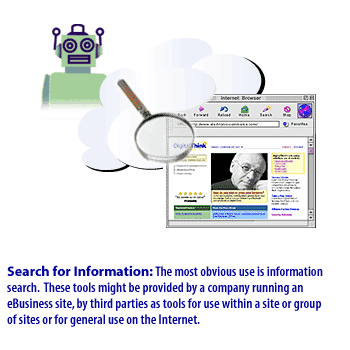
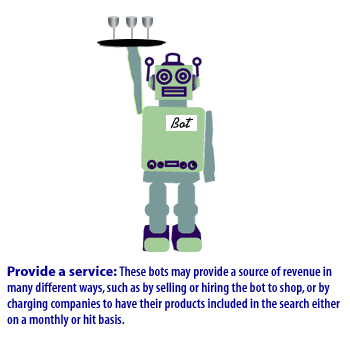
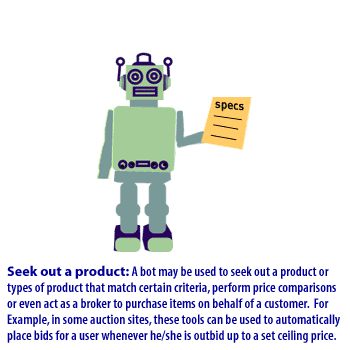
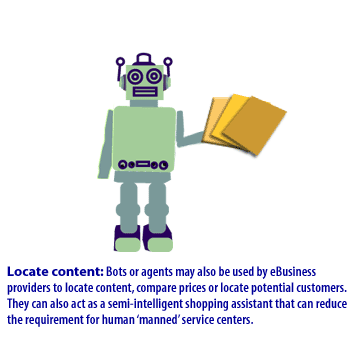
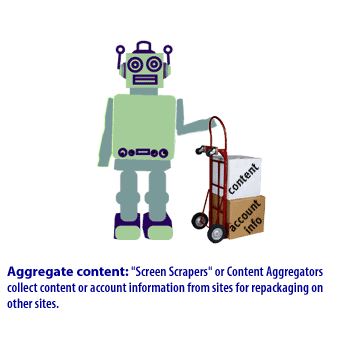
Appropriate use of bots
As we have discussed in the Slide Show above, bots can actively and dynamically cooperate to problem-solve, complete tasks, and arrive at solutions despite incomplete or inconsistent knowledge or data. It has been argued by some that bots are harmless, by others that they are intrusive, and yet others that they are even destructive. Because bots can be intrusive, supply erroneous or redundant information, or slow down the performance of sites, they should be deployed with care. Some sites block-out the use of bots altogether or have trust and distrust lists of approved and disallowed bots. Standards are starting to emerge that specify what a bot can and cannot do. As an architect, you must consider the potential benefit of bots and agents for your solution, but also their limitations. Bots may interfere with content, or interrogate your information in their site; you should consider how the site will be referenced by bots or agents to ensure appropriate representation. For additional information on the use of bots on the Web, check the Resources page.
Intelligent agents and Web bots
Some companies are already deploying intelligent agent technology to turn Web hits into business relationships, to connect suppliers and customers with core business, and to use profiling and analysis to surface emerging patterns in their data. Others use bots to automatically retrieve information (i.e., stock prices, news, sports scores, weather, and so on) from Web sites for repackaging and inclusion in other Web sites. Some of this information is clearly copyright-protected, and some is not. What are the issues concerning copyright, branding, and accuracy/legality for this third-party information? Where else do Web bots and intelligent agents have potential and actual application for gaining competitive advantage?
Potential and actual application of Web bots and intelligent agents
It has been argued that Web bots and intelligent agents have unrealized potential in areas including telecommunications, personal digital assistants, information management, information economics, business applications, air traffic control, entertainment and interactive TV,
transportation, and financial management.
In the next lesson, you will learn about the differences between push and pull technologies.
In the next lesson, you will learn about the differences between push and pull technologies.
B2B Digital Marketing Strategy